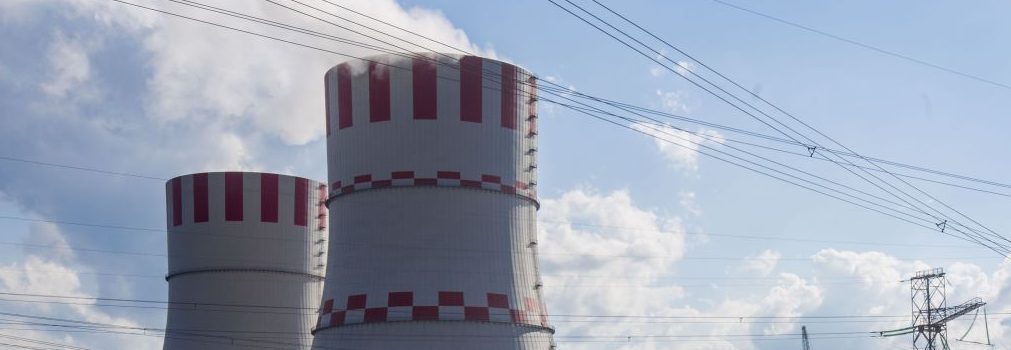While the U.S. federal government has effectively retreated from a position of international leadership on the joint issues of climate change and low-carbon energy solutions by pulling out of the 2015 Paris Climate Accord, Russia has been successfully promoting nuclear energy as a clean, cost-efficient, and safe form of energy, implementing 34 nuclear reactors construction projects in 13 foreign countries. Over the last several years, Russia has expanded nuclear exports through state-corporation Rosatom and cemented its presence in geopolitical hotspots like the Middle East, South Asia, and EU/NATO states along its western border, with additional projects in Latin America and Africa.
Russia’s eagerness to use nuclear exports to integrate itself with potential political and economic partners by offering competitive pricing and loans from the Russian state is a long-term strategy that has given rise to the term “nuclear diplomacy,” with several major consequences for a geopolitical landscape in which the U.S. and Russia compete for shares of the energy market and global influence:
1. Rosatom is reducing Russia’s dependency on hydrocarbons. Russia is often called a “petrostate” but Rosatom’s expanding portfolio of overseas orders, worth $133 billion in 2016 and growing in 2017, is reducing disproportionate dependence on volatile hydrocarbon markets, and supporting the push for a technology and knowledge-based economy. In the context of Russia’s systematic measures to distance itself from Western economic policies and institutions, a diversified and independent Russian economy is increasingly insulated from to U.S. influence.
2. Each project represents decades of Russian influence in traditional U.S.-ally states like Finland, Egypt and Jordan. In addition to design and construction, Rosatom’s integrated offers include all manner of financing, long-term fuel-supply, training, education, and waste-management, requiring the presence of Russian nuclear experts, and a long-term commitment to both commercial and diplomatic cooperation. As early as 2014, Rosatom representatives were stationed in Russian embassies in 14 countries around the world. The proliferation of valuable Russian assets abroad creates a situation where Moscow has close ties with local governments and grounds to justify a physical presence to protect its assets and personnel in these regions.
3. The integrated offer model gives Moscow leverage over customers. Rosatom’s full-service offerings mean the Kremlin has the power to cut nuclear fuel supplies, halt waste removal, or demand payment on projects stalled over diplomatic disputes.
4. The gap in know-how keeps getting bigger and more difficult for the U.S. to close. Each project is a demonstration of Rosatom’s growing technical know-how, which inspires trust and wins customers. U.S. energy giant Westinghouse’s first domestic nuclear reactor project in over 30 years, the spearhead of America’s nuclear revival, saw Westinghouse declare bankruptcy amid an estimated $12 billion in overspending and construction halted indefinitely, despite tentative plans to continue construction on one of the two reactors. Countries like South Africa, the Czech Republic, and Mexico, once interested in Westinghouse’s AP1000 design have expressed unanimous reluctance to be first-of-a-kind in construction. Westinghouse (and by proxy, the U.S.) will have to wait for the (hopefully) successful completion of the AP1000 NPP under construction in China to gain the confidence of potential customers and challenge Russia’s play for dominance in the nuclear energy market. In July 2017, Russia took advantage of the Westinghouse troubles to pick up contracts for two additional units of the Kudankulam NPP on the southern-most tip of India. An agreement for Westinghouse to build six in nuclear reactors had been the driving agenda of U.S.-India cooperation, but now sees Russia expanding its role in the region.
5. Russia’s growing presence in the Middle East can dilute U.S. influence over regional affairs. Rosatom helped build the first nuclear power plant in the Middle East, Iran’s Bushehr 1, and in March 2017, announced plans to help construct two more.
* Saudi Arabia, which competes with Iran for regional hegemony, has expressed interest in building up to 16 nuclear reactors to provide up to 15 percent of projected energy needs. An agreement signed with Rosatom in June 2017 is significant given the possible size of the project, impact on Saudi’s oil exports, and risk of potential diversion into a nuclear weapons program, and possibility of closer ties between Moscow and Riyadh bringing the latter into closer support for Russia’s agenda in Syria.
* Jordan and Egypt, the only two Middle Eastern countries to recognize Israel, are key to US goals in the Middle East, and Russia’s NPP construction in both countries could compromise US ability to influence strategic peace processes.
6. Russia’s growing presence in South Asia includes projects in China, India, Bangladesh, Vietnam and Laos. Increased cooperation between China and Russia may undermine U.S. efforts to contain China’s ambitions for regional hegemony. Rosatom’s project in Bangladesh, located at the apex of the Bay of Bengal, a regional point between three nuclear powers-China, Pakistan, India—can impact US attempts to partner with Pakistan and India on resolving regional security and energy issues.
7. Projects in Turkey, Belarus, Hungary, and Finland underscore Russia’s assertive ambitions in Europe. Rosatom’s partnership with Turkey has withstood several diplomatic tensions since 2015, including the downing of a Russian military plane in Turkish airspace and conflicting views on Syria. Nonetheless, Russia has proven willing to tolerate Turkey’s more assertive foreign policy goals outside of the NATO alliance in exchange for more influence in the Black Sea region. Investing in EU/NATO states creates a physical buffer along its Western flank and leverages mutual interest to bind Russia closer to a strategic region where confidence in collective security and EU policy is flagging.
By providing energy solutions in strategic regions, Russia reaffirms its ambitions to be a global superpower and strengthen its geopolitical influence. As the U.S. struggles to articulate clear and comprehensive leadership regarding cost-effective and energy-efficient solutions for itself and global partners, it will have to reckon with the expanding and evolving model of energy dependence and diplomacy Russia’s nuclear ambitions are exporting.
This article was featured in the InsideHook newsletter. Sign up now.























